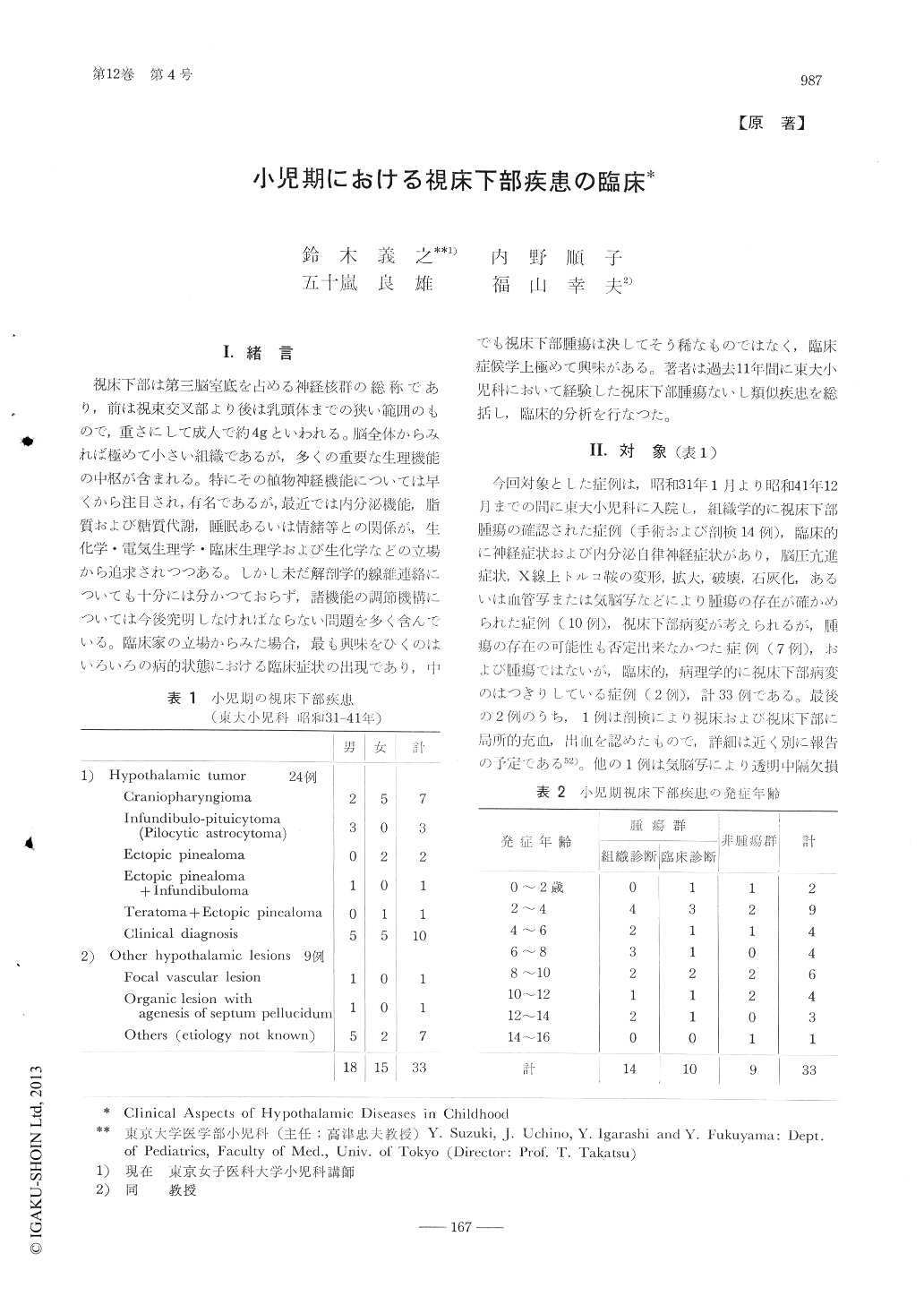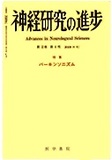Japanese
English
- 有料閲覧
- Abstract 文献概要
- 1ページ目 Look Inside
I.緒言
視床下部は第三脳室底を占める神経核群の総称であり,前は視束交叉部より後は乳頭体までの狭い範囲のもので,重さにして成人で約4gといわれる。脳全体からみれば極めて小さい組織であるが,多くの重要な生理機能の中枢が含まれる。特にその植物神経機能については早くから注目され,有名であるが,最近では内分泌機能,脂質および糖質代謝,睡眠あるいは情緒等との関係が,生化学・電気生理学・臨床生理学および生化学歳どの立場から追求されつつある。しかし未だ解剖学的線維連絡についても十分には分かつておらず,諸機能の調節機構については今後究明しなければならない問題を多く含んでいる。臨床家の立場からみた場合,最も興味をひくのはいろいろの病的状態における臨床症状の出現であり,中でも視床下部腫瘍は決してそう稀なものではなく,臨床症候学上極めて興味がある。著者は過去11年間に東大小児科において経験した視床下部腫瘍ないし類似疾患を総括し,臨床的分析を行なつた。
Thirty-three children with the hypothalamic syndrome were studied clinically. These include 24 cases with primary hypothalamic tumor, 7 cases of unknown etiology, and 2 other rare cases.
Hypothalamic tumor was confirmed histologi-cally in 14 cases; craniopharyngioma 7, infundibu-loma (infundibulo-pituicytoma) 3, ectopic pinealo-ma 2, and combined tumor 2 (ectopic pinealoma with infundibuloma, and with teratoma). The neurological signs and symptoms including thesigns of increased intracranial hypertension in corn-b ination with pneumoencephalography and/or cerebral angiography were important for clinical diagnosis of hypothalamic tumor.
Two very rare cases were experienced. A 4 year-old boy was admitted to the hospital because of obesity, polyuria and polydipsia. Pneumography revealed typical picture of the agenesis of septum pellucidum, and he was considered to have a congenital hypothalamic lesion associated with the developmental brain anomaly. He was mentally not retarded clinically, nor was there any neuro-logical abnormalities.
Another boy, 10 years old, showed various symptom, mainly of autonomic disturbances; ano-rexia, abdominal pain, vomiting, diarrhea and constipation, headache and vertigo, hiccough, ede-ma, sweating, skin rash, intermittent hyperpyrexia, loss of consciousness or convulsion persisted for 3 years. The patient died from bronchopneumonia. The postmortem examination revealed marked con-gestion localized to thalamus and hypothalamus with small hemorrhagic lesion just above the left mammillary body.
Only one third of the patients showed the neu-rological signs and symptoms as the initial mani-festations, though all developed them sooner or later. Most of patients visited hospitals with com-plaints other than those concerned with the central nervous system, that is, those of metabolic, endo-crinological or autonomic disturbances. Above all, polyuria and polydipsia, anorexia and emaciation were the most frequent initial symptoms. This fact indicates that the hypothalamic lesion must always be considered in face of these clinical findings.
Hypothalamus is a very unique region in the central nervous system, which links the neurology to the endocrinology and metabolism. Clinicophy-siological studies were made on some autopsied cases with special reference to the "hypothalamic" symptoms, and hypothalamic symptomatology in relation to the hypothalamic lesion was discussed.

Copyright © 1968, Igaku-Shoin Ltd. All rights reserved.


